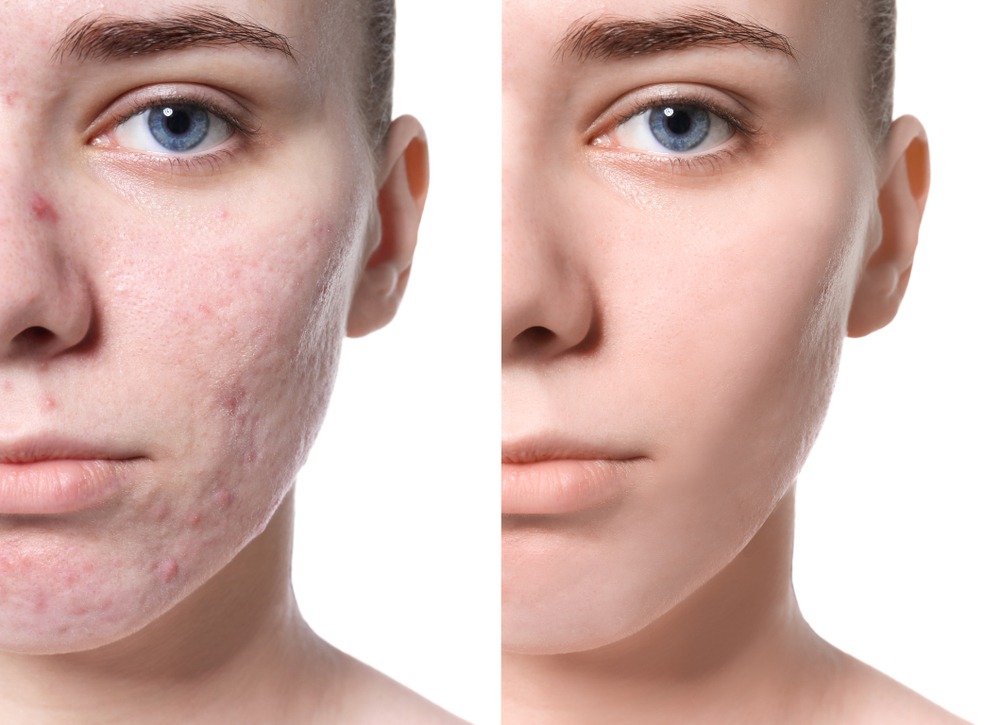Exploring Skin Conditions: Treating and recognizing Acne Scars for Healthier Skin
Acne marks stand for a significant problem for people seeking to keep healthy skin, as they can impact both look and self-confidence. Comprehending the numerous types of scars, from atrophic to hypertrophic, is crucial for figuring out suitable treatment choices.
Comprehending Acne Marks
Understanding acne scars is critical for anyone that has actually experienced serious acne, as these marks can have an enduring effect on both physical look and emotional wellness. When the skin undergoes inflammatory reactions throughout active acne lesions, acne marks form. The severity of scarring is usually influenced by elements such as the kind of acne, its period, and individual skin attributes.
The body's all-natural recovery procedure can cause either atrophic marks, which show up as clinical depressions in the skin, or hypertrophic scars, which are raised and result from overproduction of collagen. Furthermore, the emotional toll of acne scars should not be ignored; many people report sensations of humiliation, stress and anxiety, and lowered self-worth. This psychological problem can impact social communications and total lifestyle.
Attending to acne marks requires a comprehensive understanding of their development and impact. Recognition of the potential for long-lasting effects associated with untreated marks can motivate individuals to look for appropriate treatments. Early intervention and reliable management techniques can considerably improve skin appearance and enhance psychological durability, highlighting the relevance of recognizing the intricacies surrounding acne marks.
Types of Acne Scars
Acne scars can be classified into distinct kinds, each showing special attributes and calling for particular therapy techniques. The key kinds of acne scars consist of atrophic, hypertrophic, and keloid marks.

Hypertrophic marks, in comparison, are elevated over the skin level and are the result of too much collagen manufacturing throughout the recovery procedure. They commonly remain within the boundaries of the original acne sore. Keloid marks are similar however expand past the initial injury site, developing larger, elevated areas that can be itchy or painful.
Recognizing these types of marks is necessary for selecting ideal treatment choices. Different marks might react much better to particular therapies, such as laser treatments, fillers, or surgical interventions, stressing the significance of a tailored method to acne scar monitoring.
Recognizing Your Scars
Acne scars typically fall into two classifications: atrophic and hypertrophic marks. These can further be classified right into ice-pick marks, boxcar scars, and rolling marks, each exhibiting distinct features and calling for various methods for analysis - acne scars.
Hypertrophic marks, on the various other hand, are raised and occur because of excessive collagen manufacturing during the healing procedure. Recognizing the certain attributes of your scars-- such as depth, appearance, and width-- is important for proper recognition. Furthermore, think about the circulation of scars across your skin, as this can show the extent and duration of the acne problem.
Involving with a skin doctor can give beneficial insights into the nature of your scars, assisting in the distinction between various types. A thorough understanding of your marks will eventually cause a more tailored and reliable therapy strategy, making sure a more clear and much healthier skin.
Therapy Options Offered
Identifying the certain kind of acne marks present on your skin lays the groundwork for checking out efficient therapy alternatives. Usual sorts of acne scars consist of atrophic (depressed), hypertrophic (increased), and post-inflammatory erythema.
For atrophic marks, choices such as chemical peels, microneedling, and laser resurfacing are extensively utilized. Chemical peels off use acids to eliminate the outer layer of skin, advertising brand-new cell growth. Microneedling includes tiny needles that produce micro-injuries, stimulating collagen manufacturing. Laser resurfacing targets damaged skin cells, boosting structure and tone.
Hypertrophic scars can be treated with corticosteroid injections to flatten the mark or laser treatment to decrease inflammation and improve appearance. acne scars treatment. Silicone gel sheets and pressure dressings might likewise help in taking care of elevated scars
In enhancement, dermal fillers can momentarily official website fill in depressions from atrophic marks, while medical excision may be proper for serious cases. Each treatment option has its benefits and considerations, making it vital to consult with a skin specialist. They can supply tailored recommendations based on the type and severity of your scars, along with your skin kind and overall health and wellness.
Tips for Prevention
Efficient avoidance approaches can substantially minimize the possibility of creating acne scars. Making use of non-comedogenic items aids prevent clogged up pores, which can aggravate acne.
Preventing need to pick or pop acne lesions is crucial, as this can bring about much deeper skin damages and raise the risk of scarring. Rather, consider using a cold compress or over-the-counter therapies to reduce swelling and inflammation.
Sun defense is another crucial facet of avoidance; ultraviolet (UV) rays can darken marks and hinder the healing procedure. Applying a broad-spectrum sunscreen with at the very least SPF 30 daily can safeguard the skin and advertise also recovery.
Lastly, maintaining a well balanced diet rich in vitamins, anti-oxidants, and minerals supports skin health and wellness and healing. Remaining moisturized and handling stress degrees can also play a significant function in minimizing acne flare-ups. By applying these techniques, people can substantially lessen their chances of creating acne scars.

Conclusion
In conclusion, understanding and identifying acne scars is important for effective treatment and Bonuses achieving healthier skin. Numerous types of acne scars, consisting of hypertrophic and atrophic marks, necessitate details treatments tailored to specific demands.
The body's all-natural recovery procedure can result in either atrophic scars, which appear as depressions in the skin, or hypertrophic scars, which are increased and result from overproduction of collagen. They are additional split into 3 subtypes: ice choice marks, boxcar marks, and rolling scars. Acne scars generally drop into two categories: atrophic and hypertrophic scars. find out These can better be identified into ice-pick scars, boxcar scars, and rolling marks, each showing unique characteristics and needing different approaches for assessment.
Numerous kinds of acne marks, consisting of atrophic and hypertrophic scars, demand details treatments tailored to individual needs.